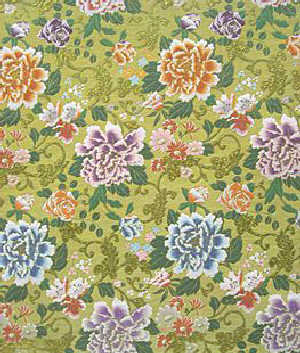
Nanjing Yunjin,or Nanjing Brocade, is soft and lovely as the clouds, more valuable than gold.
NanjingYunjin refers to the incredibly beautiful brocade made in Nanjing, capital city of eastern Jiangsu Province.Yunin Chinese means clouds, andjinmeans brocade. The image is lovely: A delicate and flossy piece of brocade that feels just like soft clouds.
Among all ancient fabrics, silk cloth known as jin represents the industry's top arts and crafts. Furthermore, Nanjing brocade has absorbed all the best silk-fabrics-weaving crafts and skills of past dynasties and ranks first in quality among the Chengdu brocade in southwestern Sichuan Province, Suzhou brocade in Jiangsu Province, and Zhuang brocade in southwestern Guangxi Province. With the rich cultural and scientific meaning it carries, the Nanjing brocade is honored by experts as "the last milestone in the technological history of Chinese silk fabrics".
Brocade history

The history of Nanjing Yunjin can be traced back to the three kingdoms period(220-280). In a war, which broke out at the end the East Jin Dynasty (317-420), General Liu Yu defeated the Xi'an-based Later Qin kingdom (384-417). The victory brought all the craftsmen in Xi'an back to Jiankang, now Nanjing City, among whom brocade-weavers were a dominant force. The brocade weavers were top craftsmen nationwide and had learned lots of skills from minority ethnic groups. The East Jin government had set up a special brocade office in Nanjing to manage the production of the brocade, which represented the formal establishment of Nanjing brocade.
Later in the Yuan Dynasty(1279-1368), Mongolians conquered Central China and the rulers then defined a tradition of decorating officer's dress with shining gold and silver. With the flourishing and exploitation of gold mines, weavers added real gold thread into Nanjing brocade. The shining brocade immediately won great favor of feudal kings and aristocrats and also was popular among ethnic minorities such as Mongolians, Tibetans and Uygurs. In the Yuan, Ming (1368-1644) and Qing (1644-1911) dynasties, rulers set up official special fabrics bureaus in Nanjing for the administration and monopoly of the brocade production and marketing. They listed it as one of the special royal tributes to emperors. Brocade technology was repeatedly refined despite high costs both in terms of time consumed and materials used. It was not long before the brocade surpassed the other famous silk products, and it obtained fame as a silk fabric with the greatest rarity and high technology.
In the middle of the Qing Dynasty, the boom in the production of the brocade reached its climax. In the numerous fabrics trading households along the Qinhuai Riverin Nanjing, weaving could be heard as it echoed day and night and an unprecedented outcome in brocade production was enjoyed. Records say that more than 30,000 looms were involved in brocade production and 300,000 people made a living on it.










